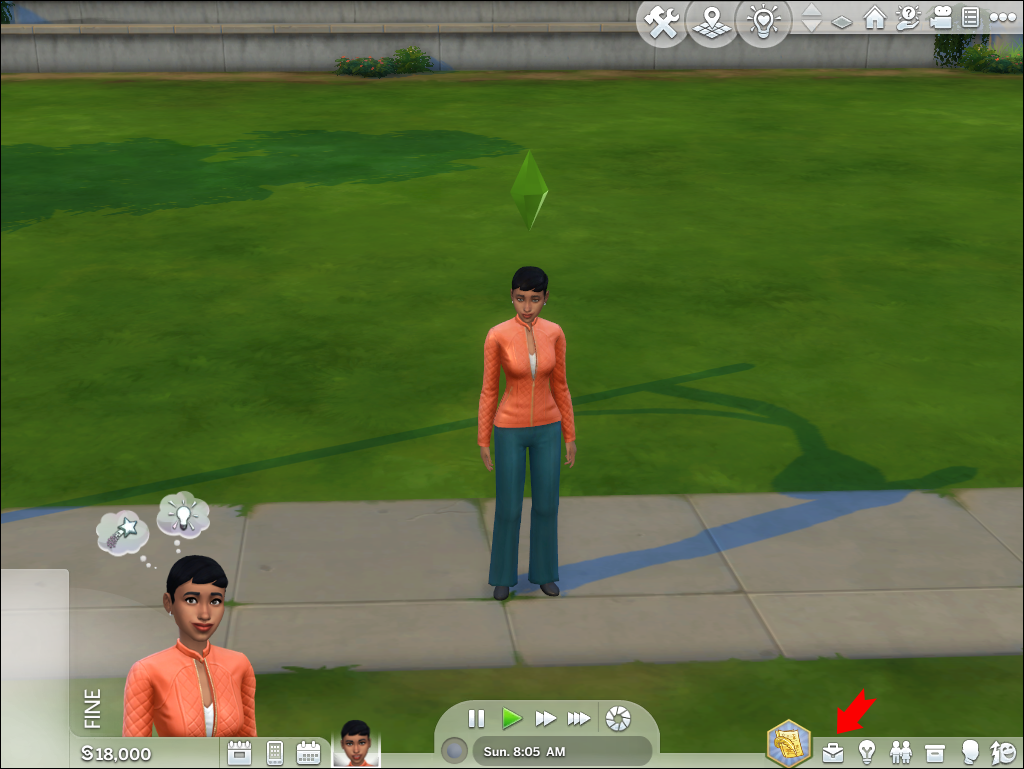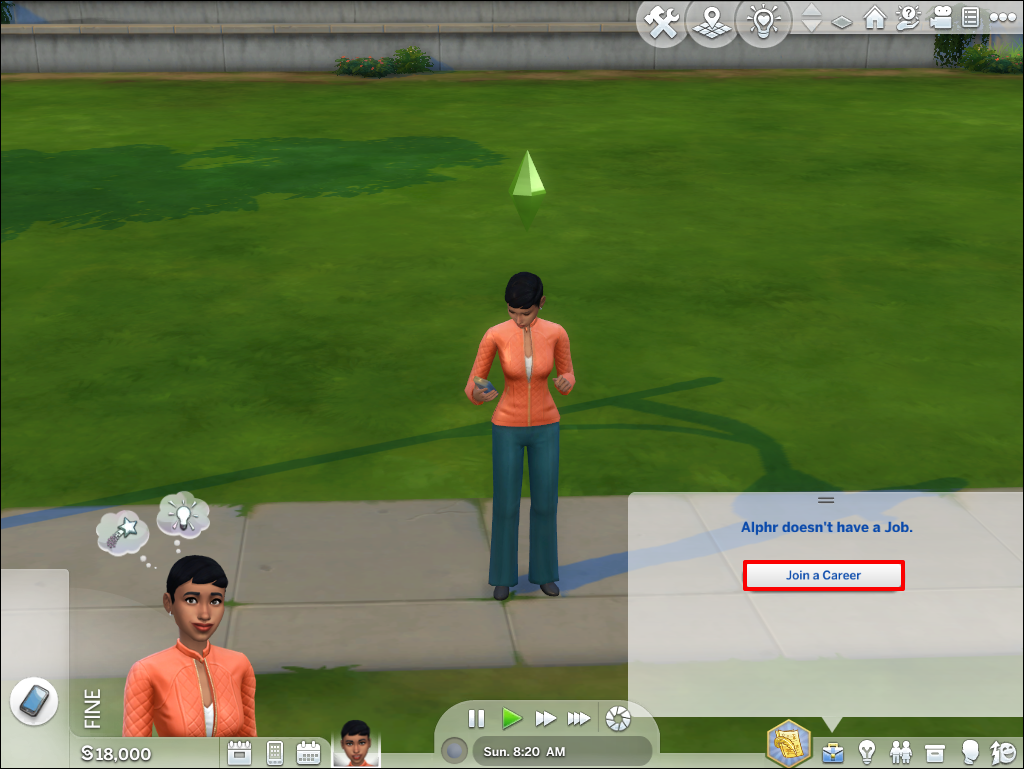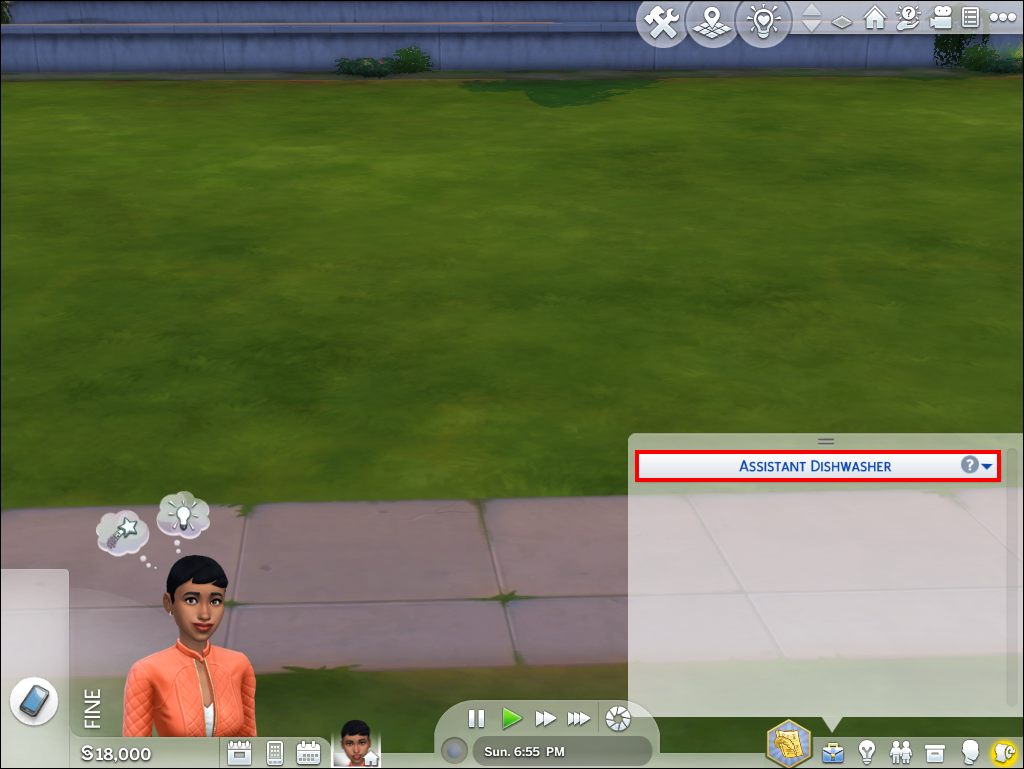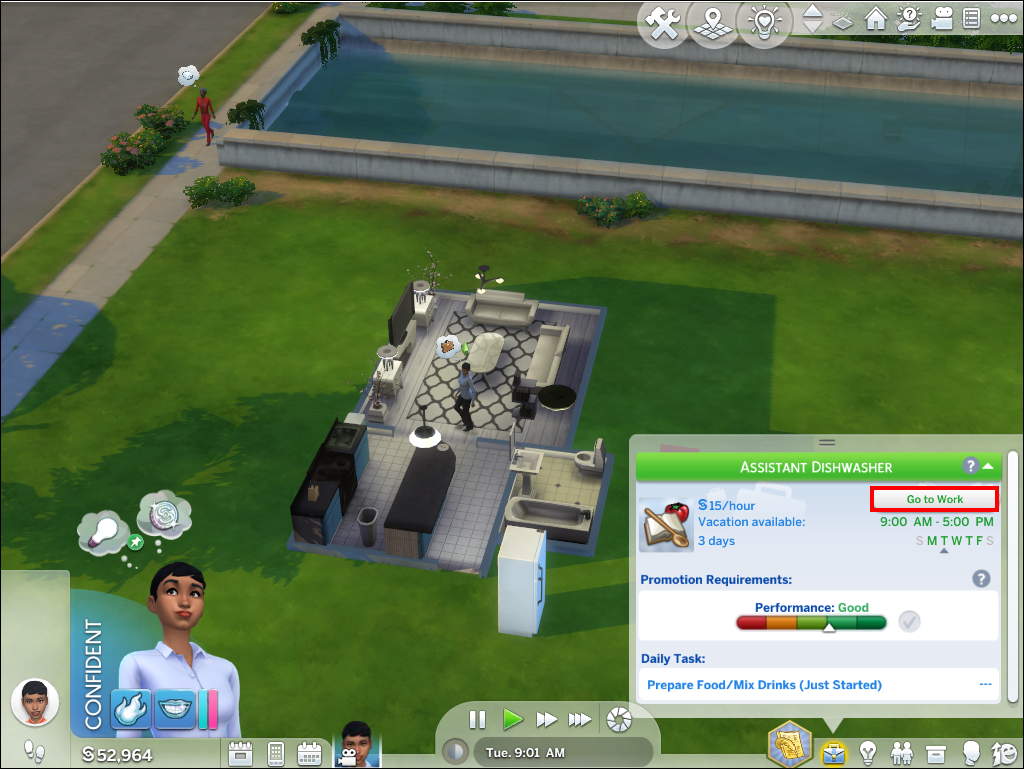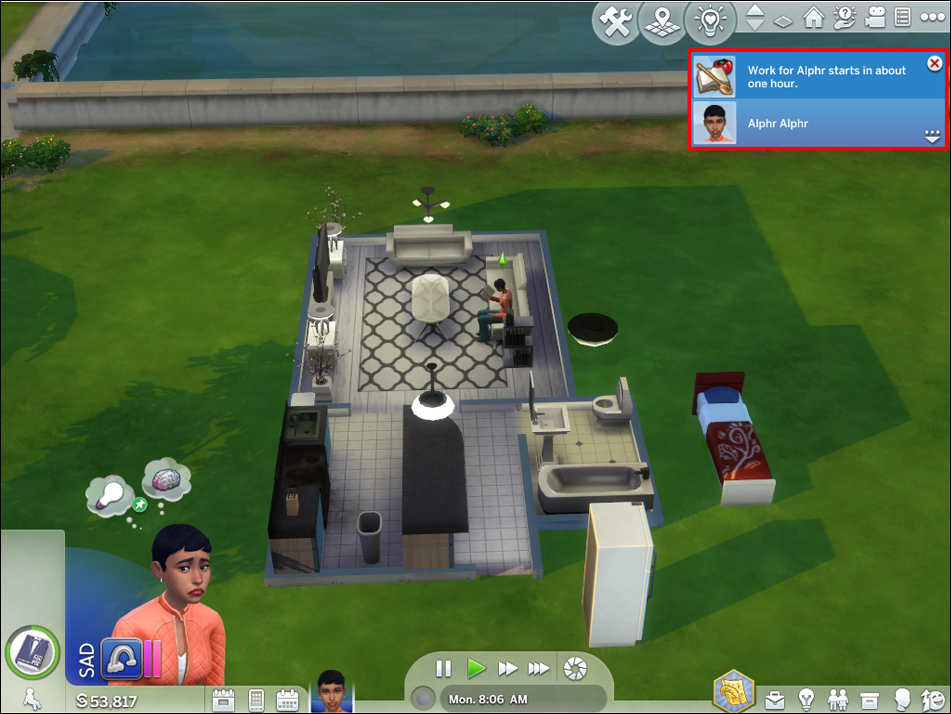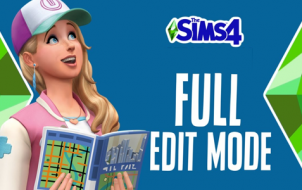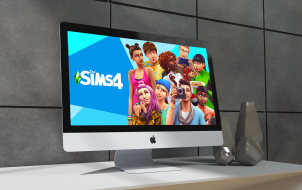To keep your Sims 4 home budget afloat and keep building your dream house, you need Simoleons. If you don’t want to cheat your way through the game or you’re hunting the achievements and can’t use them, your Sims need jobs.
This article will guide you through giving your Sims jobs and following them to work so you can improve their social and career prospects.
How to Get a Job
Just like in real life, the first step to success is choosing a profession and finding work. Both the base game (now available for free) and the multitude of expansions provide an extensive list of career options, some of which are available right from your Sim’s home. For a Sim to get a job, you will need to:
- Select the Sim you would like to get employed.

- Click on the Careers tab in the lower left corner, marked with a briefcase.

- Click on the Join a career option from the screen that pops up.

- A new window saying “Select a career for…” will appear and allow you to choose a calling. Most careers have two different options. Note that once you choose a sub-career, you can’t change it (but can swap careers completely).

- Once you choose a career path, click the checkmark at the bottom right corner of the window.

- Wait until the work time comes.
Tip: On a PC, “J” is the default hotkey for accessing the Careers tab.
Alternatively, instead of going to the Careers tab, you can also use your Sim’s phone, an icon on the lower left side of the screen. Once there, you select the Business icon and the Find a job option. This will also lead you to the “Select a career for…” window.
With the “Get to Work” and “Get Famous” expansion packs installed, active careers (professions) allow you to follow your Sim to work and interact with colleagues, friends, and the work environment.
How to Go to Work in Sims 4
The following section applies to professions with office work — scientist, detective, and doctor careers.
Once you choose a career for your Sim, wait for their first work day to start. You can check the time by opening the Careers tab in the lower right corner. When it’s time for work, there are only two things you need to do:
- Open Careers.

- Click the Go to Work option from the bubble.

- A pop-up will prompt you to follow the Sim to work if they have an applicable career. If you choose not to, they become unavailable until their workday ends.

- If you decide to follow the Sim, your household switches to their work, and you can swap between them if you have remaining household members in the house.

If your Sim goes to work happy and in a good mood, it’ll get a performance boost of about 20%, so check whether your Sim’s needs are met. With this boost, they will likely get promoted faster and earn more.
You can choose the working pace of your Sim by clicking the little bolt icon next to the avatar, where the emotions are shown, and then choosing between Work hard, Take it easy, or Socialize.
Socialize allows the Sim to gain friends at work, Take it easy makes them make little progress but keeps them relaxed, while Work hard makes your Sim earn more but get tense in the process.
Sims can also leave home early. However, this can impose penalties in terms of reduced pay or lowered chance for a promotion. Beware, if your Sim leaves work early often, they might lose their job.
Work, Work, Work
The job mechanic is very important for a no-cheats playthrough. “Get to Work” and “Get Famous” expansions can make it a lot more interesting, but that doesn’t mean the base selection is weak. So make sure to pick the right career that fits your Sim’s personality, and make use of the tips offered. So, be patient, get your Sims to work, and make their careers flourish!
Do you have any exciting career tips for newcomer Sims players? Make sure to leave your opinion in the comments!
Disclaimer: Some pages on this site may include an affiliate link. This does not effect our editorial in any way.
